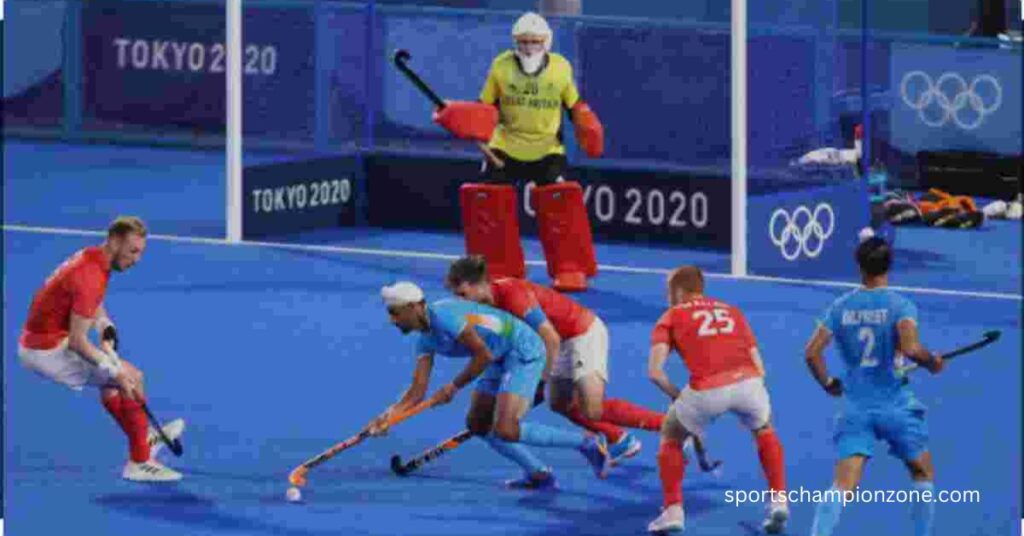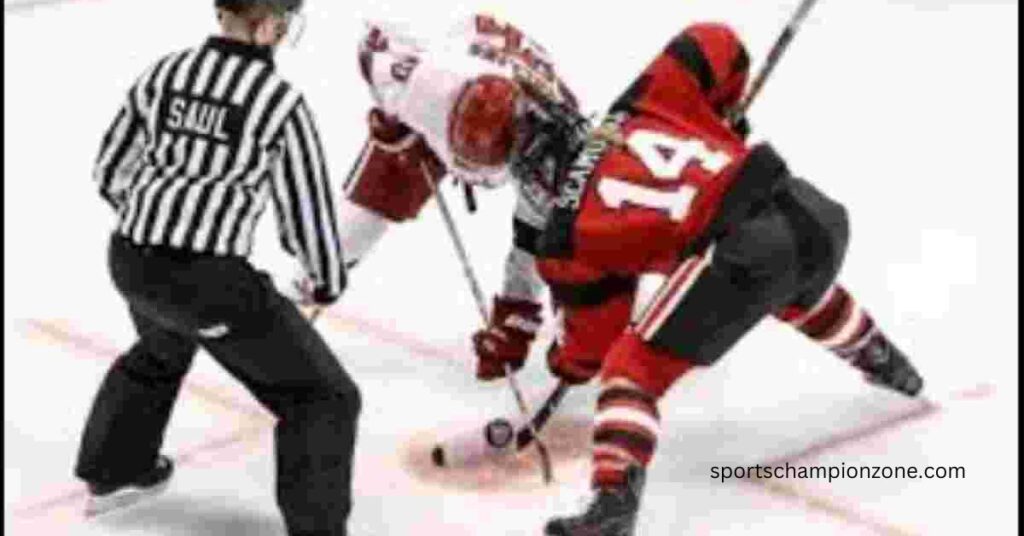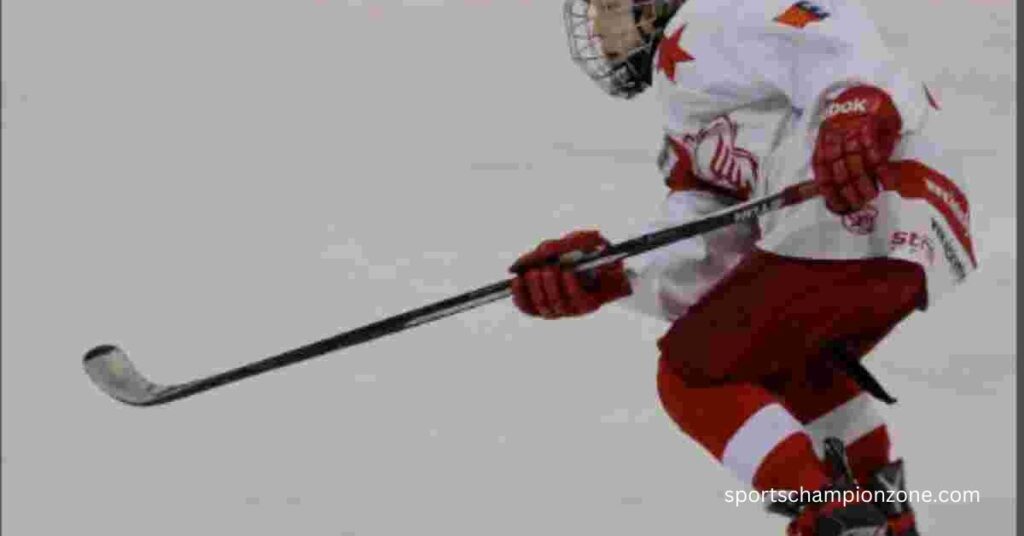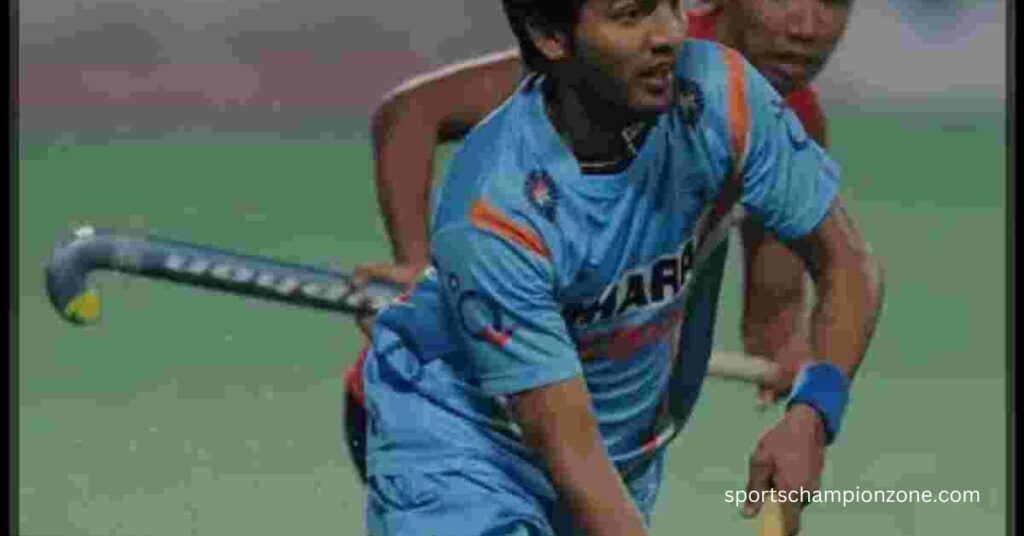How many quarters in hockey? In hockey, game there are four (4) quarters in game on field. Each quarter comprise of 15 mint and absolute time in hockey game is one hours. Two groups played in hockey and each group comprise off11 players. The two mints break after a One (1) and Third (3) quarters. Each quarter goes on for 15 minutes, amounting to an all game season of an hour. They partition the game into four equivalent parts, offering groups breaks and chances to change their methodologies.

How Many Quarters in Hockey? Quarters in Field Hockey
Field hockey, a well know sport played on grass fields, is separated into four sections called quarters. Dissimilar to a few different games that have parts, field hockey utilizes quarters to structure the game. Each quarter goes on for 15 minutes, amounting to an all game season of an hour. How about we investigate what quarters mean in field hockey and what they mean for the game.
What are Quarters? In field hockey, quarters resemble sections in a book. They partition the game into four equivalent parts, offering groups breaks and chances to change their procedures. These breaks are significant for players to pause and rest, hydrate, and get direction from their mentors.
Term of Quarters
Each quarter in field hockey goes on for 15 minutes. This implies that players need to take on a steady speed cautiously to ensure they have sufficient energy for the whole game. The brief span of quarters adds to the speedy idea of the game.
Breaks Between Quarters: After each quarter, there’s a brief break before the following one starts. Throughout this break, players refocus with their colleagues and mentors. Mentors utilize this opportunity to talk about strategies, make replacements, and spur their players. These breaks are critical for groups to change their course of action in light of how the match is unfurling.
Influence on Interactivity: The quarters structure the progression of the game and effect how groups play. In the event that a group is losing, they have open doors in the accompanying quarters to get back in the saddle. Essentially, on the off chance that a group is winning, they should keep up with their lead all through every one of the four quarters. This adds energy and unconventionality to the game, keeping fans connected with until the last whistle.
Duration of Quarters
In field hockey, the span of quarters is a key perspective that shapes the cadence and force of the game. Understanding how long each quarter endures and its importance is fundamental for the two players and fans the same.
Length of Each Quarter: Field hockey matches are partitioned into four quarters, with each quarter going on for 15 minutes. How many quarters in hockey? this implies that players have a sum of an hour of interactivity to exhibit their abilities and contend with their rivals.
Total Number of Quarters in a Match: With each match containing four quarters, groups have different chances to transform the game. The four-quarter structure guarantees that there are unmistakable stages to the match, each offering its own difficulties and amazing open doors.
Significance of Breaks Between Quarters
Between each quarter, there is a brief break during which players can rest, hydrate, and get direction from their mentors. These breaks, regularly enduring a couple of moments, are significant for players to re-energize their energy levels and pull together for the following quarter. How many quarters in hockey? mentors utilize this opportunity to make vital changes and propel their group, amplifying their odds of coming out on top as the game advances.

Impact on Gameplay: The length of quarters impacts different parts of ongoing interaction, including pacing, technique, and player execution. Groups should deal with their energy levels actually to guarantee they keep up with maximized operation all through each quarter. Moreover, mentors decisively distribute assets and go with strategic choices in view of the time staying in each quarter, planning to acquire an upper hand over their rivals.
Player Performance
In field hockey, player execution is basic to the outcome of a group. How many quarters in hockey? grasping the elements that impact player execution, like actual perseverance and mental flexibility, is fundamental for competitors and mentors the same.
Actual Requests: Field hockey is a truly requesting sport that expects competitors to have strength, speed, and endurance. Players should have the option to run all over the field ceaselessly as long as necessary. Aerobic exercise, including cardiovascular activities and span preparing, is critical for players to assemble the endurance expected to support their presentation all through the game.
Mental Versatility: notwithstanding actual wellness, mental strength is fundamental for players to succeed in field hockey. The high speed nature of the game expects players to pursue fast choices under tension while keeping a cool head. How many quarters in hockey? mental durability, certainty, and the capacity to keep even headed in high-pressure circumstances are fundamental credits for players to perform at their best.
Adapting to Momentum Shift: Field hockey matches are dynamic and can encounter energy shifts as groups deal with the game. Players should have the option to adjust to these progressions and answer likewise to keep up with their exhibition levels. How many quarters in hockey? whether confronting affliction or profiting by amazing open doors, the capacity to change strategies and mentality is critical to prevailing in field hockey.

Balancing Effort and Rest: Overseeing energy levels successfully is vital for players to support their presentation all through the game. Players should figure out some kind of harmony between applying most extreme exertion during play and saving energy during breaks between quarters. How many quarters in hockey? legitimate hydration, sustenance, and recuperation procedures assume a huge part in guaranteeing players keep up with max execution levels beginning to end.
The History of Quarters in Hockey
The structure of field hockey matches, including the division into quarters, has developed over the long haul to improve the game’s seriousness, procedure, and onlooker request. How many quarters in hockey? understanding the historical backdrop of how many quarters in hockey on grass fields gives bits of knowledge into how the game has created and adjusted to address the issues of players and fans.
Early Beginner: Field hockey has a rich history going back hundreds of years, with beginnings followed to old civic establishments like Egypt, Greece, and Persia. At first played on normal grass fields, early cycles of the game probably highlighted nonstop interactivity without organized breaks or quarters. How many quarters in hockey? matches may still up in the air by casual settlements on game span or until one group accomplished a foreordained score.
Introduction of Structured Play: As field hockey acquired fame and formalized rules arose, the requirement for organized play became obvious. In the late nineteenth and mid twentieth hundreds of years, coordinated field hockey coordinates started executing halftime breaks to give players rest and mentors with open doors to plan. How many quarters in hockey? notwithstanding, the change to quarters was still in its outset.
Development of Quarters: The idea of separating field hockey matches into quarters got forward momentum during the twentieth 100 years as the game kept on advancing. How many quarters in hockey? this underlying change expected to upgrade the progression of the game, give players more incessant rest spans, and acquaint vital open doors for groups with refocus and change their strategies.
Combination into True Guidelines: Quarters turned into a standard component of field hockey coordinates with their consideration in the authority rules and guidelines overseeing the game. Global overseeing bodies like the Worldwide Hockey League (FIH) and public affiliations embraced quarters as a central part of match structure, guaranteeing consistency and consistency across contests.
Refinement and Standardization: Over the long haul, the span of quarters and the particulars of break stretches were refined and normalized to enhance ongoing interaction and player government assistance. The reception of four quarters, each enduring 15 minutes, turned out to be broadly acknowledged as the standard in field hockey rivalries around the world. Also, guidelines in regards to the length and timing of breaks between quarters were laid out to keep up with decency and equilibrium.
Influence on Interactivity: The presentation of quarters reformed the elements of field hockey matches, affecting key independent direction, player molding, and observer commitment. Groups currently had assigned chances to survey their exhibition, make strategic changes, and benefit from force shifts all through the game. Quarter breaks became urgent minutes for mentors to grant direction and inspiration, molding the result of matches.
Proceeded with Transformation: While quarters have turned into a staple of field hockey on grass fields, the game proceeds to develop, and expected changes to match structure are dependably getting looked at. Developments like video reference frameworks, rule changes, and progressions in player observing innovation might additionally refine the job of quarters in upgrading the general quality and seriousness of field hockey.

Rules and Guidelines: Quarters in Hockey on Grass Field
How many quarters in hockey? Understanding the standards and guidelines administering the division of field hockey matches into quarters is fundamental for players, mentors, and fans. In this aide, we investigate the key rules laid out by worldwide administering bodies and public affiliations with respect to quarters in hockey played on grass fields.
Division into Quarters: Field hockey matches are separated into four a balance of called quarters. Each quarter commonly goes on for 15 minutes, giving organized time periods and breaks for groups to rest and plan. The division into quarters guarantees a decent and coordinated way to deal with match length.
Official Match Design: As per the principles and guidelines laid out by overseeing bodies like the Global Hockey League (FIH), field hockey matches played on grass fields comply to a normalized match structure including four quarters. How many quarters in hockey? this consistency guarantees consistency across contests and permits players
Duration and Breaks: The span of each quarter, set at 15 minutes, stays steady all through field hockey matches. How many quarters in hockey? Also, breaks between quarters are remembered for the authority match design to permit groups time to rest, hydrate, and get direction from mentors. These breaks ordinarily keep going for a couple of moments and are a fundamental piece of the game’s pacing and methodology.
Quarter Break Techniques: During breaks between quarters, explicit methods are followed to guarantee reasonableness and productivity. Players are allowed to pass on the field to get guidelines from mentors, hydrate, and address any hardware issues. Mentors use this opportunity to convey strategic changes and propel their group for the impending quarter.
Substitutions and Strategic Timeouts: Quarter breaks additionally give potential open doors to replacements and key breaks. Groups might make player replacements to enhance execution or change strategies in light of the progression of the game. How many quarters in hockey? key breaks, whenever allowed inside the principles of the opposition, permit mentors to stop play and address crucial points in time or make strategic changes.
Role of Officials: Match authorities assume a critical part in upholding the principles and guidelines connected with quarters in field hockey. Arbitrators guarantee that quarters are stuck to as per the assigned length and breaks, keeping up with reasonableness and request all through the match. Moreover, authorities might speak with mentors and players to work with a smooth change between quarters.
Is there 4 quarters in hockey?
In hockey, whether it’s played on ice or on a grass field, there are normally four quarters. Each quarter goes on for a predetermined measure of time, normally 15 minutes in field hockey. There are breaks between quarters for groups to rest and plan. Very much like in different games with quarters, the game is separated into these sections to give structure, breaks for players, and potential open doors for mentors to make acclimations to their systems in light of the game’s advancement.
Does hockey have 3 or 4 periods?
In hockey, whether it’s played on ice or a grass field, the game is regularly partitioned into periods, not quarters. Field hockey ordinarily has two periods, each enduring 35 minutes, with a halftime in the middle between. Nonetheless, in certain varieties or levels of play, there may be four quarters all things considered. This can change contingent upon the particular principles overseeing the game, the competition, or the association wherein it’s played. The periods fill similar need as quarters in giving design to the game, considering breaks, and working with key changes by mentors and players.
What is the duration of hockey match?
In field hockey, the term of a match can fluctuate contingent upon the degree of play and the particular principles set up. Commonly, a standard field hockey match comprises of two periods, each enduring 35 minutes, with a halftime in the middle between. This amounts to a complete playing season of 70 minutes. Be that as it may, at times, for example, global matches or more elevated level rivalries, the match length may be unique. It’s fundamental for players and onlookers to know about the particular principles and guidelines overseeing the match they are taking part in or watching to grasp the specific span of play.
Is there overtime in hockey?
Yes, in field hockey, there can be overtime in the event that the score is tied toward the finish of guideline play. Extra time considers an unequivocal result to the game by offering the two groups a chance to break the tie. During over time, the groups normally play for a predefined period, like 10 or 15 minutes. In the event that neither one of the groups scores during extra time, the match could continue to a punishment shootout to decide the champ. Additional time adds energy and strain to the game, as the two groups endeavor to get triumph inside the additional time distributed, guaranteeing an exhilarating end for players and onlookers the same.
Conclusion:
How many quarters in hockey? the guidelines and guidelines encompassing quarters in hockey on grass fields give an unmistakable design to matches, guaranteeing reasonableness and consistency across contests. With each match separated into four fourth of 15 minutes, players have assigned open doors to feature their abilities and adjust their techniques. How many quarters in hockey? breaks between quarters permit groups to rest, hydrate, and get direction from mentors, improving the pacing and energy of the game. By complying with these rules, field hockey contests keep everything under control and give a charming encounter to players and fans the same, encouraging a lively and dynamic brandishing climate.
If you want to more detail and better Information about this you can also visit :
